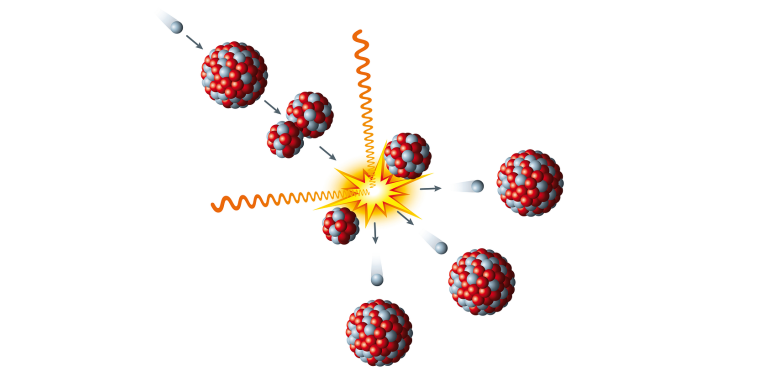What Is the Percent Ionization? Key Concepts and Its Uses
Percent ionization is a term used in chemistry to describe how a substance dissociates into ions when dissolved in a solvent. Meanwhile, it is a measure of the degree to which a molecule breaks down into its individual ions when it is placed into a solution. The percent ionization of a substance is a critical factor in determining its properties and behavior in solution. It is an important concept in understanding many chemical reactions and processes.
What is Percent Ionization?
The percent ionization formula is expressed as the ratio of the number of ions produced to the number of initial molecules, multiplied by 100 to give a percentage. It is calculated as:
Percent Ionization = (Number of ions produced / Total number of molecules) x 100
How to Calculate Percent Ionization?
To calculate the percent ionization of a substance, it is necessary to determine the number of ions produced and divide that by the total number of initial molecules. For example, if 0.01 moles of a substance dissociate to produce 0.005 moles of ions, the percent ionization can be calculated as:
What is Percent Ionization Formula?
It is as follows:
Percent Ionization = (0.005 moles / 0.01 moles) x 100 = 50%
How to Determine Percent Ionization of Weak Acids?
Weak acids have a low degree of Ionization, meaning that they only partially dissociate into ions when dissolved in a solvent. On the other hand, strong acids have a high degree of Ionization and completely dissociate into ions when placed in solution.
Ionization Reaction Example:
Consider the ionization reaction of acetic acid (CH3COOH), which dissociates into acetate ions (CH3COO-) and hydrogen ions (H+) when placed in water. The equation for this reaction is:
CH3COOH + H2O → CH3COO- + H3O+
How to Determine Percent Ionization of Acetic Acids?
To calculate the percent ionization of the acetic acid, we would need to determine the number of ions produced and divide that by the total number of initial molecules. For example, if we have 0.01 moles of acetic acid in a solution, and it dissociates to produce 0.005 moles of acetate ions and hydrogen ions, the percent ionization can be calculated as:
Percent Ionization = (0.005 moles / 0.01 moles) x 100 = 50%
This means that 50% of the acetic acid molecules have dissociated into ions when placed in water, while the remaining 50% are still in their original molecular form.
In conclusion, the concept of percent ionization holds significant importance in the field of chemistry. By comprehending the formula for percent ionization, the Ionization of weak acids, and conducting relevant examples, individuals can further their understanding of chemical reactions and processes.
Importance of Percent Ionization in Chemistry & Laboratory
The concept of percent ionization holds significant importance in the field of chemistry. By comprehending the formula for percent ionization, the Ionization of weak acids, and conducting relevant examples, individuals can further their understanding of chemical reactions and processes.
When it comes to the laboratory, percent ionization plays a crucial role as it provides valuable information about the behavior and properties of substances in solution. In the laboratory, percent ionization is used to determine the strength of acids and the degree to which they dissociate into ions, as well as to understand the properties of other substances in solution. This information can be used in a variety of applications, including the analysis of chemical reactions, the preparation of solutions, and the development of new products and processes. Understanding the use of percent ionization in the laboratory is essential for success in the field of chemistry and provides valuable insights into the behavior of substances in solution.
Westlab Canada | Buy Laboratory Equipment and Accessories
Westlab Canada is committed to providing comprehensive support for individuals pursuing careers or education in chemistry. Our extensive range of Chemicals and laboratory equipments, combined with our knowledgeable support services, is designed to aid in the growth and success of individuals in the field. If you seek to broaden your knowledge of percent ionization and the principles of chemistry, we invite you to reach out to us and discover the resources we have to offer.
FAQs
How is percent ionization calculated?
Percent ionization is calculated as the ratio of the number of ions produced to the number of initial molecules multiplied by 100 to give a percentage. The formula is expressed as Percent Ionization = (Number of ions produced / Total number of molecules) x 100.
What is the difference between strong acids and weak acids in terms of percent ionization?
Weak acids have a low degree of Ionization, meaning that they only partially dissociate into ions when dissolved in a solvent. On the other hand, strong acids have a high degree of Ionization and completely dissociate into ions when placed in solution.
Can you provide an example of an ionization reaction to illustrate the concept of percent ionization?
One example of an ionization reaction is the dissociation of acetic acid (CH3COOH) into acetate ions (CH3COO-) and hydrogen ions (H+) when placed in water. To calculate the percent ionization, the number of ions produced is divided by the total number of initial molecules and multiplied by 100.
Which has the highest percent ionization?
The highest percent ionization is usually seen in strong acids, as they completely dissociate into ions when placed in a solvent. On the other hand, weak acids can only partially dissociate into ions and therefore have a lower percent ionization.


